This past week we finished up the final lessons of our unit on what causes populations to change by learning about abiotic and biotic factors and how those factors impact an ecosystem.

As always, the 6th grade scientists were given the task of figuring out how abiotic factors affect living things (biotic factors) – in our case, we used worms. The scientists were asked to see how the worms reacted to a dry area vs a wet, damp area. However, before conducting the experiment the scientists were asked the following question – “Why is it necessary to conduct multiple trials of the same experiment?”
The scientists had an answer pretty much immediately. They knew that we had to conduct multiple trials to get accurate evidence. The more times we test something, the more we minimize the impact of errors.
Because of this reasoning we knew we had to test our worms multiple times.
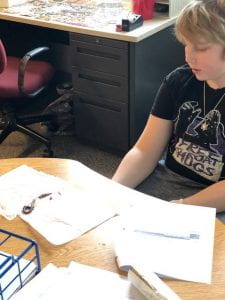
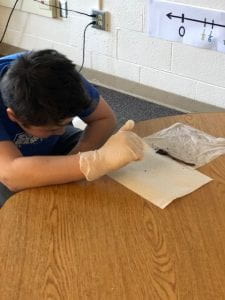

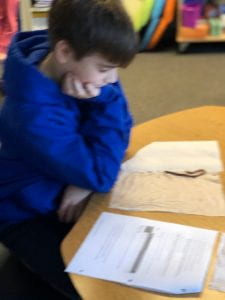

Through each of our 9 scientists 6 trials we were able to conclude that the worms preferred the damp environment over the dry environment. Although, a few worms really enjoyed the cold table.
Along with this, it allowed us to understand better how abiotic factors like a damp or dry environment can really impact biotic factors in an ecosystem. This lead to the scientists making connections – for example, many of them mentioned how plastic (an abiotic factor) can badly affect many of the organisms in that same ecosystem (a biotic factor).
The scientists will have an assessment on our unit next Monday. They have worked so hard and I have loved being a part their rich discussions and ideas.
Our next unit coming up is focused on chemistry where students will be investigating the question, “How Can I Smell Things from a Distance?”
Stay Tuned!
Happy Monday,
Gev. McAdams
The 5th grade scientists might be tired this week because of all the modeling we have been doing as we continue to dive deeper into discovering what matter is and how it affects organisms.
So far, through experimentation we have figured out the following:

How do we know for sure that air and water give the plants matter? Well because we weighed both air and water and we know that anything that takes up space or has mass is MATTER! When we blew air into the balloon and its weight increased, that PROVED it is matter. We also know that when we add water to something, its weight also increases, which once again PROVES it is matter!
But what about light?????????
Light does not take up space, it does not have mass (we shined light onto a scale and the scale stayed at 0.00 grams), so how on earth can it help our plants grow? Stay tuned because we are going to be investigating this idea next week!
Take a look at some of the amazing modeling/thinking the 5th grade scientists have been doing this week.
Modeling air in a syringe:(compressed, expanded, vs open)

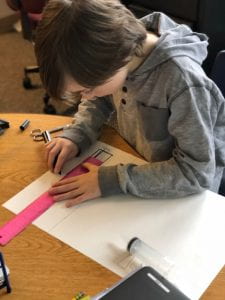

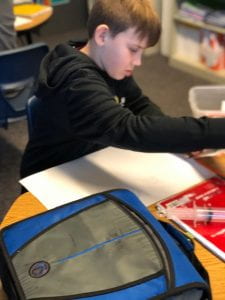

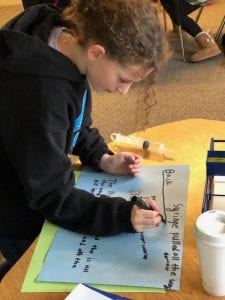

Modeling how/where plants get their matter from to grow:


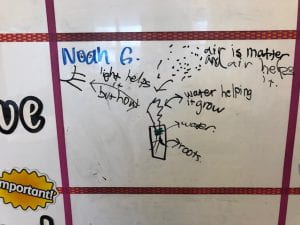
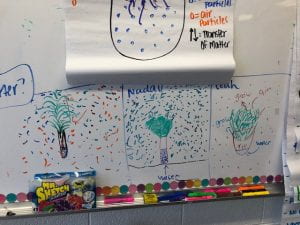
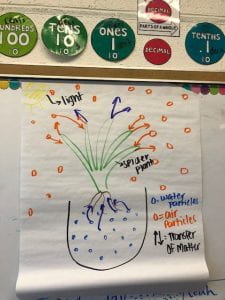
Have a wonderful weekend,
Gev. McAdams
This week we kicked off our 3rd math unit on multiplication and division of fractions!
Shown below are the standards, written in ‘I Can’ statements, we will be working on throughout the next month or so:
- I can multiply a whole number by a unit fraction.
- I can multiply a whole number by a non-unit fraction.
- I can use models to explain multiplication of fractions.
- I can simplify fractions before multiplying.
- I can multiply mixed numbers.
- I can explain and show the Commutative, Associative, and Distributive Properties with fractions.
- I can compare the results of different fraction operations.
- I can solve word problems with fractions.
- I can predict how the size of a fractional factor will affect the size of the product.
- I can divide fractions and show the process through modeling.
- I can solve division word problems.
- I can distinguish between multiplication and division based on the language of word problems.
The 5th grade mathematicians have been doing an awesome job explaining and showing their work to prove their answers are correct this week.
One tricky concept we discussed this week was writing comparison equations and statements using multiplication and division to explain a situation.
For example, let’s say there were 5 apples and 10 oranges. Listed below are some comparison equations and/or statements that would describe the apples and oranges:
- There are 2 times as many oranges as apples OR Oranges=2 x Apples
- There are 1/2 times as many apples as there are oranges OR Apples = Oranges x 1/2
- There are half as many apples than oranges OR Apples = Oranges / 2
This was a hard concept to wrap our heads around so we decided to act out the situation to better understand how to compare.
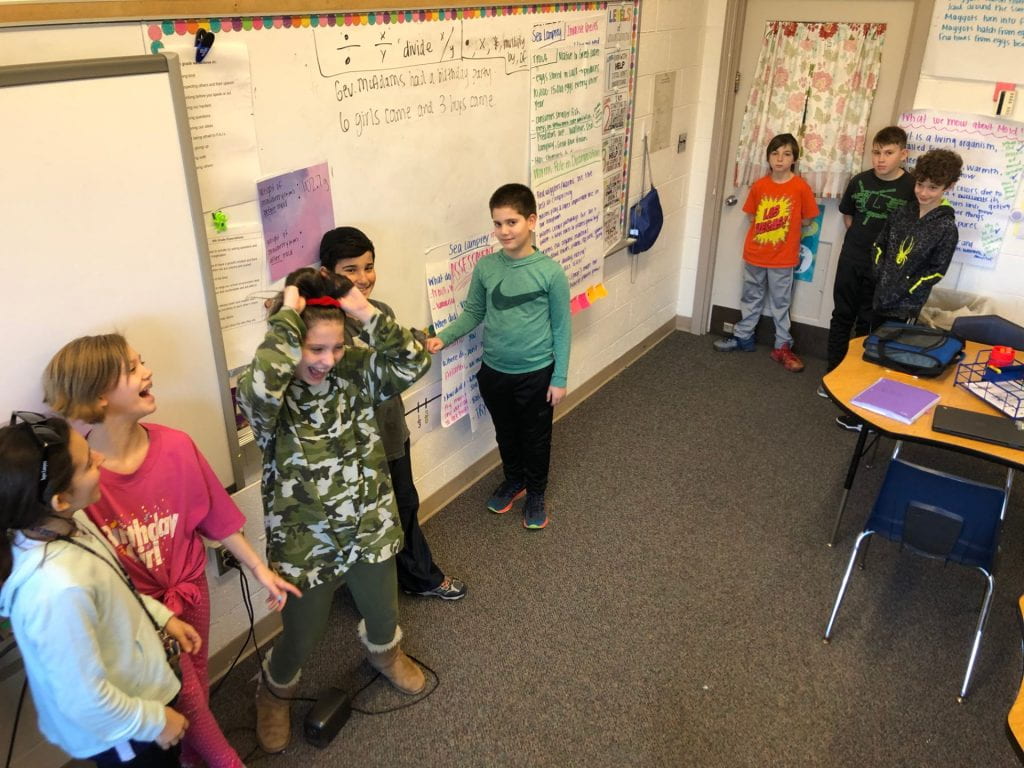
I continue to be impressed with your children and the effort they put forth into making sure they understand what we are learning. They ask amazing questions and are never afraid to ask for help when they need it.
I feel so lucky to have the opportunity to teach them!
Have a wonderful break,
Gev. McAdams
Over the past week, the 6th grade scientists have been hard at work writing their first lengthy scientific explanation. Over the course of our unit, we have been gathering evidence that our scientists are now using to prove what they are claiming.
Here are some of their claims:
- The sea lamprey are the top predator in the Great Lakes.
- The sea lamprey caused a decline in the trout population.
- Asian carp are destroying the Great Lakes ecosystem.
We are currently in the midst of our first drafts. After break, we will work on revisions to improve our explanations further.
Take a look at some portions of 6th graders first drafts below:
“The first reason the sea lamprey is the top predator in the Great Lakes is because of its population. According to the Great Lakes population charts, from 1950 to 1960, the sea lamprey population caused other organisms population to go down. By 1960 the sea lamprey population increased to about 300,000. By 1960 the trout population had declined to about 75,000. This means that the sea lamprey eats so much that its population increases while it’s prey’s population declines and starts an indirect effect, which causes other organisms to decline. Another example is based on the Great Lakes food webs, the sea lamprey doesn’t have any predators in the Great Lakes. This shows that the sea lamprey doesn’t have to worry about any predators eating them, which proves that its the top predator in the Great Lakes.”
“According to the DNR, Asain Carp is the #1 purpose to drain a lake. There have been 4 lakes drained in Wisconsin because of carp. The people are forced to do this because the carp are poisoning the water by uprooting plants to make burrows making the water toxic for other fish because there is too much mud and rocks. This means that carp do not only take up all the food but they are forcing other species to move out to fresher waters where the carp have already eaten all the food.”
“The final reason is that the sea lampreys have a deadly mouth. According to fisherman’s journal, the fisherman noticed all the fish having big wounds from sea lamprey. This means that if sea lamprey increases, a lot of fish can not survive because of sea lamprey eating habits. That is bad because the ecosystem will collapse because fish are getting killed rapidly. Another example is when I was dissecting sea lamprey, their mouths had a lot of teeth and were very strong. This shows that their mouths can break through the very tough skin. That is bad because fish that have tough skin to protect themselves, and those fish are no longer safe because sea lamprey’s mouth is so strong and toothy.”
Stay tuned to read their final drafts!
Have a wonderful break,
Gev. McAdams
I was never taught how to reflect when I was in elementary and middle school. This made reflection really challenging for me as I began to get older because I was never taught the how and why behind it.
I am so grateful that MJDS allows time and practice for both teachers and students to work on and practice this because it is such a crucial skill to have.
Here is what I’ve learned so far:
- Reflection allows you to become aware of what you learned.
- Reflection allows you to identify what you found interesting, how you feel about it, and what you can do to continue to grow.
- Reflection allows us to think more deeply about concepts and ideas.
- Reflection allows us to determine what things we feel “good” about and what things we need to work on further.
The 5th graders have been working so hard reflecting in math this unit.
Each lesson in math is focused on a different standard or ‘I can’ statement that fits in with our unit. I have been so impressed with the 5th graders reflections on each statement. Through this process the kids have been able to identify the standards that they are not totally comfortable with yet and the standards they feel confident in. This allowed them to identify what they still need to work on so they can be successful in their future math work, as well as on assessments. This is a very new process for us and is something that I know will become more natural with time and practice.
I am so excited to continue this process with your children and watch them grow. Check out one 5th graders reflection below!
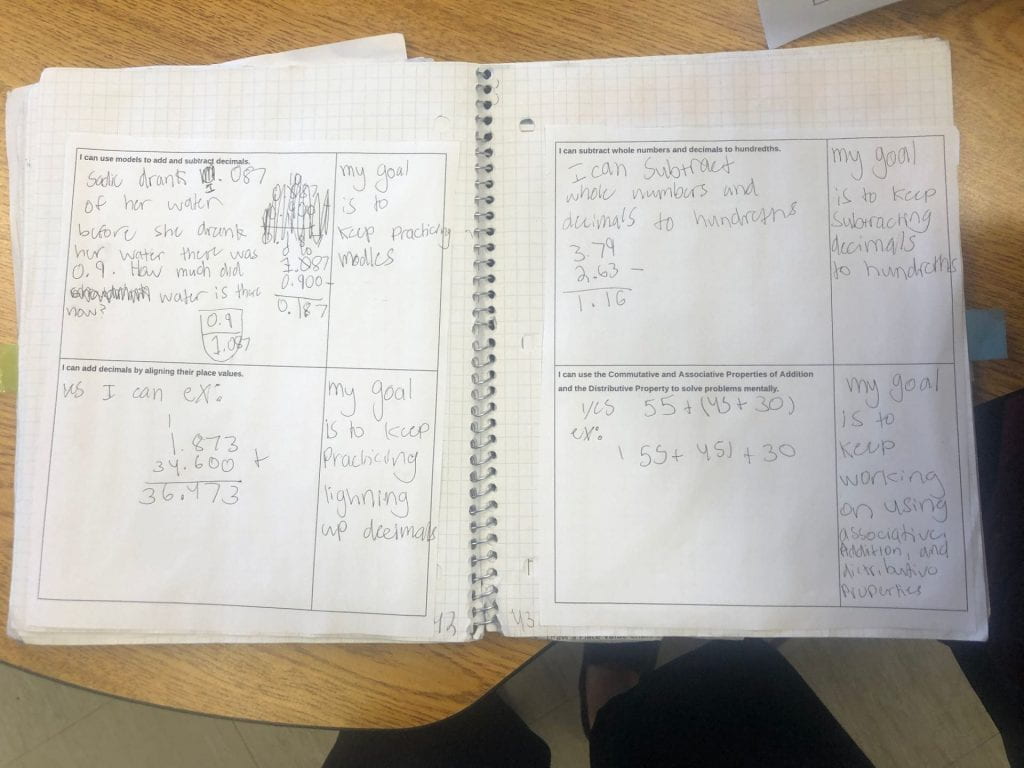
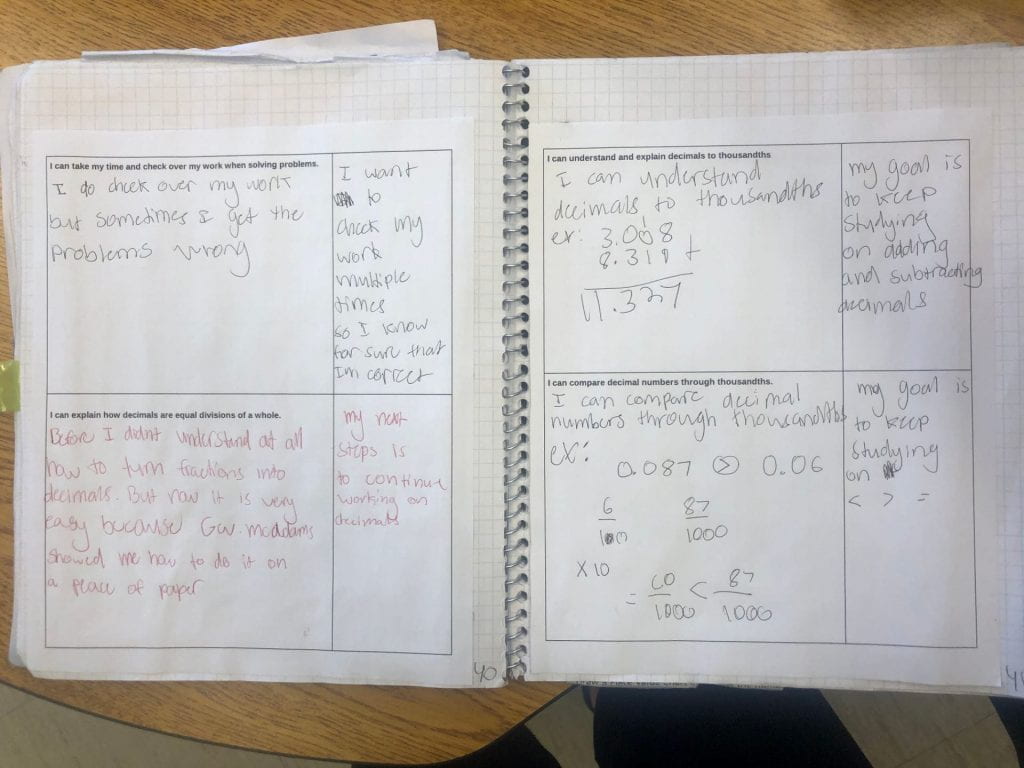 Have a great weekend,
Have a great weekend,
Gev. McAdams
Today, we began to investigate the role worms play in the decomposition of organisms (aka Worm Friday!).
Based on our past experiments, we know worms play a role in decomposition in some shape, way, or form. However, we are not totally convinced as a group of scientists what that role is YET.
To figure things out, we often conduct experiments or watch videos to identify what we notice and wonder, which then helps us to decide what we need to investigate next.
Today, we watched the video below, which shows a pumpkin decomposing over time in a bin of soil and worms. The scientists started to record their noticings and wonderings based on the video.
As scientists, we love learning and figuring things out together. That being said, we would love to hear your input! What do YOU notice and wonder based on this video?
This week, our 6th grade scientists created a human size food web of the Great Lakes ecosystem. This allowed the scientists to understand and explain predator/prey relationships within the food web, as well as the indirect and direct relationships between the different organisms within our food web.
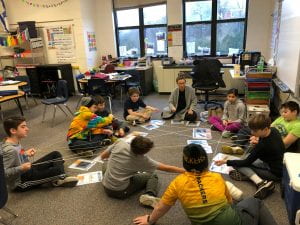
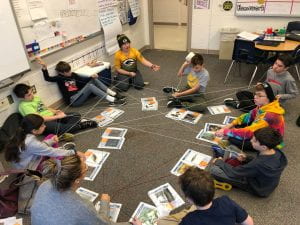
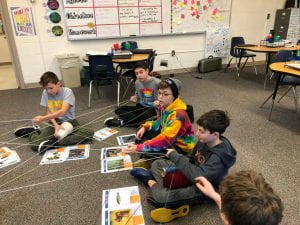
Even more interesting, our scientists got to experience what happens to an ecosystem when a disease strikes and wipes out a population of organisms within that ecosystem. In our food web, the yellow perch population got eliminated from our food web, which had some type of impact on almost all of the organisms within our web!
Ask your scientist about science this week and what organism populations they represented in our giant food web!
After Thanksgiving break, we will begin to write our next scientific explanation about what caused the trout population to decline in the Great Lakes.
Stay tuned!
Have a wonderful weekend,
Gev. McAdams
5th Science:
Wow! The scientists in 5th grade have been discovering so much throughout the past week! Our experiments are in full swing and the scientists have been doing a great job keeping their experiments fair, checking in on them daily, and making detailed observations based on what they are noticing.
Take a look at some of their experiments below and make sure you ask your child or children about what they are noticing in their experiment over the weekend!
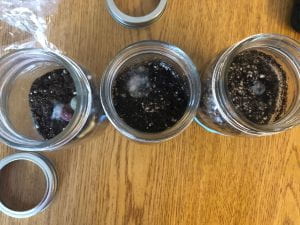
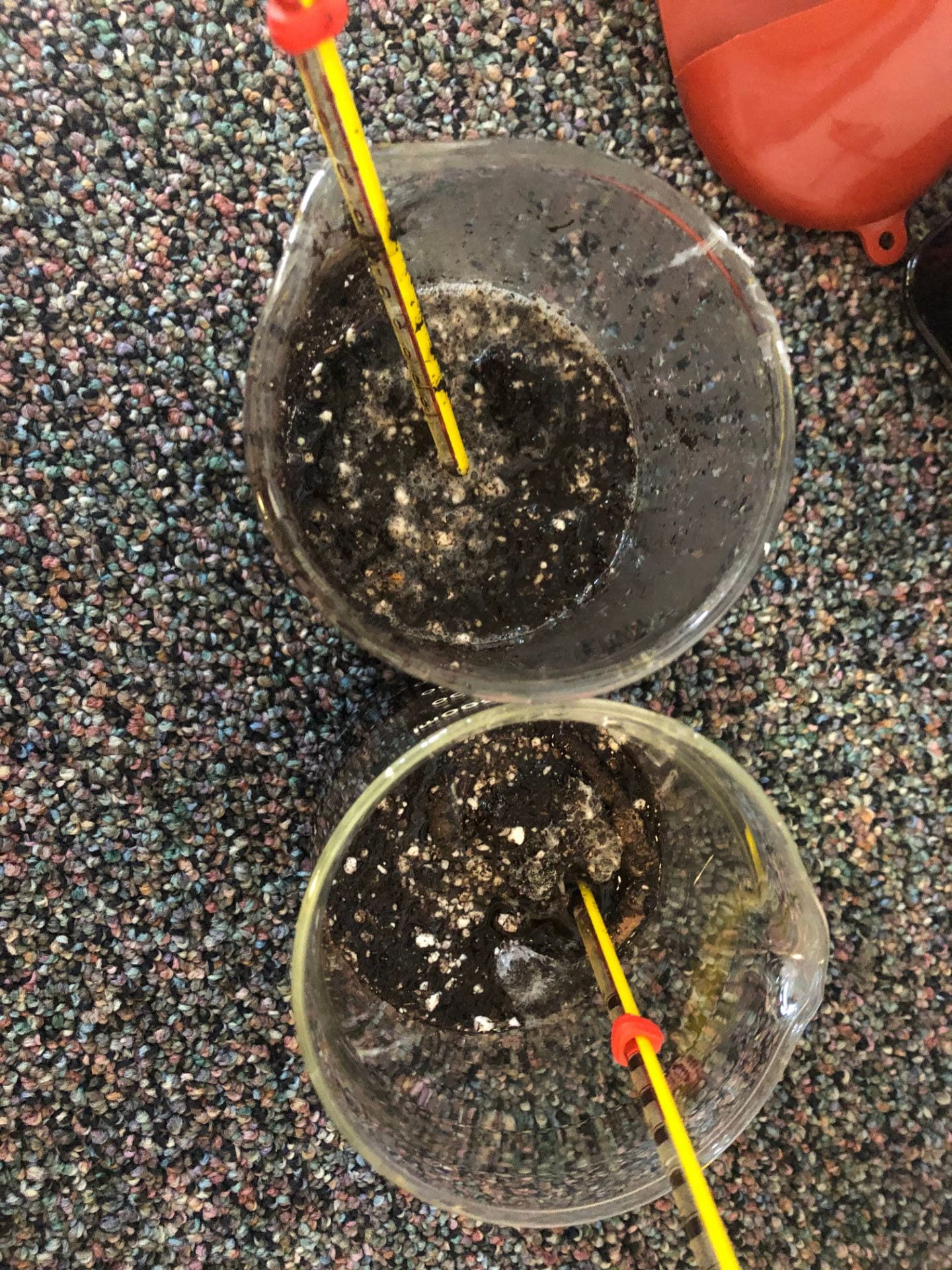

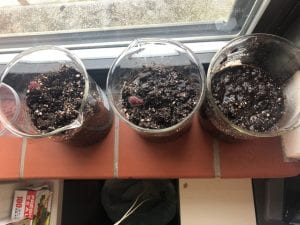



Along with this, we have started to investigate mold further.
Here is what we have figured out about mold SO FAR…
- Mold is a living organism called fungi
- Mold is formed from spores
- Mold grows and survives especially well in warm environments where there is moisture and nutrients
- The color and texture of mold depends on its environment, what it is growing on, and the type of nutrients it’s getting.
Yesterday, as a class we started discussing what happens to food when mold begins to grow on it. I asked the scientists the following question…
When mold starts to grow on a strawberry will the strawberry…
- Weigh less?
- Weigh more?
- Weigh the same?
5 of our scientists thought it would weigh less, 4 of our scientists thought it would weigh more, and 1 scientist thought it would weigh the same, which lead us to our next experiment!
As a class of scientists we decided that maybe if we tested the weight of something before it molded and then tested the weight of it after it molded we would be able to figure out which scientists were correct in their prediction!
So that is of course what we did! Throughout this process, we also realized that our food sample needed to be kept in an airtight container.
Why? Because we discovered that AIR HAS MASS (ask your scientist(s) at home about our balloon experiment), so our food sample has to be in a closed container because air could affect our data results!
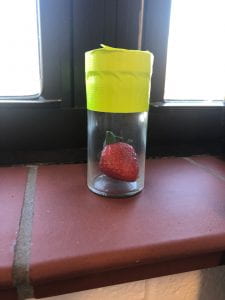

Stay tuned for more of our 5th grade scientists findings!
5th Math:
We are halfway through our next 5th grade math unit where our mathematicians are learning all about decimals and how to add and subtract them!
Shown below are all of the ‘I Can’ statements the mathematicians will be able to show and explain by the end of our unit.
Ask your mathematician(s) about what we have learned so far at home!
I have been so impressed with their engagement and participation throughout this unit so far!
I love learning with and from them 🙂
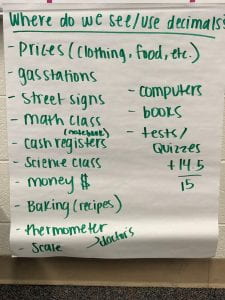
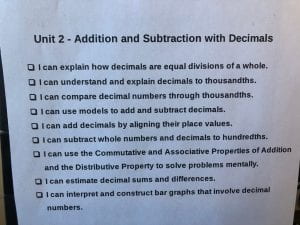
Have a great weekend,
Gev. McAdams
This week, 6th scientists used what they learned from our lab of testing different foods for fats, carbohydrates, and protein to prove that water is not a food in their first scientific explanation of the year.
6th scientists will continue to practice writing scientific explanations often this year.
Ask your child their evidence and reasoning behind why water is not a food over the weekend!
Here is an example of one of 6th grade scientist’s explanations below:
Is Water a Food? CER Practice
Stay Warm,
Gev. McAdams
WOOHOO! SPECIAL FRIEND DAY!!
On Friday, November 22, we will be hosting an all-school Special Friend Day from 7:45am – 9:45am for 3K-8th grades.
During Special Friend Day, every student at MJDS (grades 3K-8) chooses an adult who is special in their life to spend the morning with them.
Please submit the information for your child’s special friend here so invitations can be sent ASAP.
I am looking forward to meeting each child’s special friend 🙂
Have a great weekend,
Gev. McAdams

































